Guitarist Nick Lee handles the instrument like a Porsche 911 hugs the road. The German sports car is as equally deft at carving through the Big Sur coastline as it is accelerating out of corners and showing its top-end, straightaway velocity. Similarly, in just two Moon Tooth albums (2016's Chromaparagon and 2019's Crux), Lee has flexed the same versatility. In a single song (much like the 911 rips through a lap of the Monaco Grand Prix), he'll nimbly navigate a clean, precise, fingerpicked melody reminiscent of Chet Atkins before dropping the hammer and flying down the fretboard like Pantera's Dimebag Darrell or Mastodon's Brent Hinds.
While the band thrives in light-and-dark juxtapositions, their true colors and ambitions reach for the disparate musical extremes.
"The phrase we've been using is 'aggressive progressive,' but that's really just because saying you're in a rock 'n' roll band doesn't quite get the point across these days," says Nick Lee when he spoke with PG in 2016. "We're not trying to be a prog band, really. We totally get that there's an element of prog in what we do, but to me we're just a rock band in the purest sense of that term—we just happen to push the envelope of what we can do musically and push each other to do crazier shit."
After wrapping guitars for the band's forthcoming album, guitarist Nick Lee virtually invited PG's Chris Kies into Moon Tooth drummer Ray Marte's Westfall Recording studio based in Farmingdale, New York.
In this episode, Lee (also in Riot) showcases a duo of dazzling Vigiers (plus a stalwart Les Paul Standard), details his "most important volume knob," tries to explain "peanut butter" tone, and demos core sounds that involve mid-focused drives, celestial repeats, and polyphonic pitch shifters.
[Brought to you by D'Addario Backline Gear Transport Pack: https://ddar.io/GigBackpack-RR]
Vigier G.V. Rock "Chromaparagon Swirl"
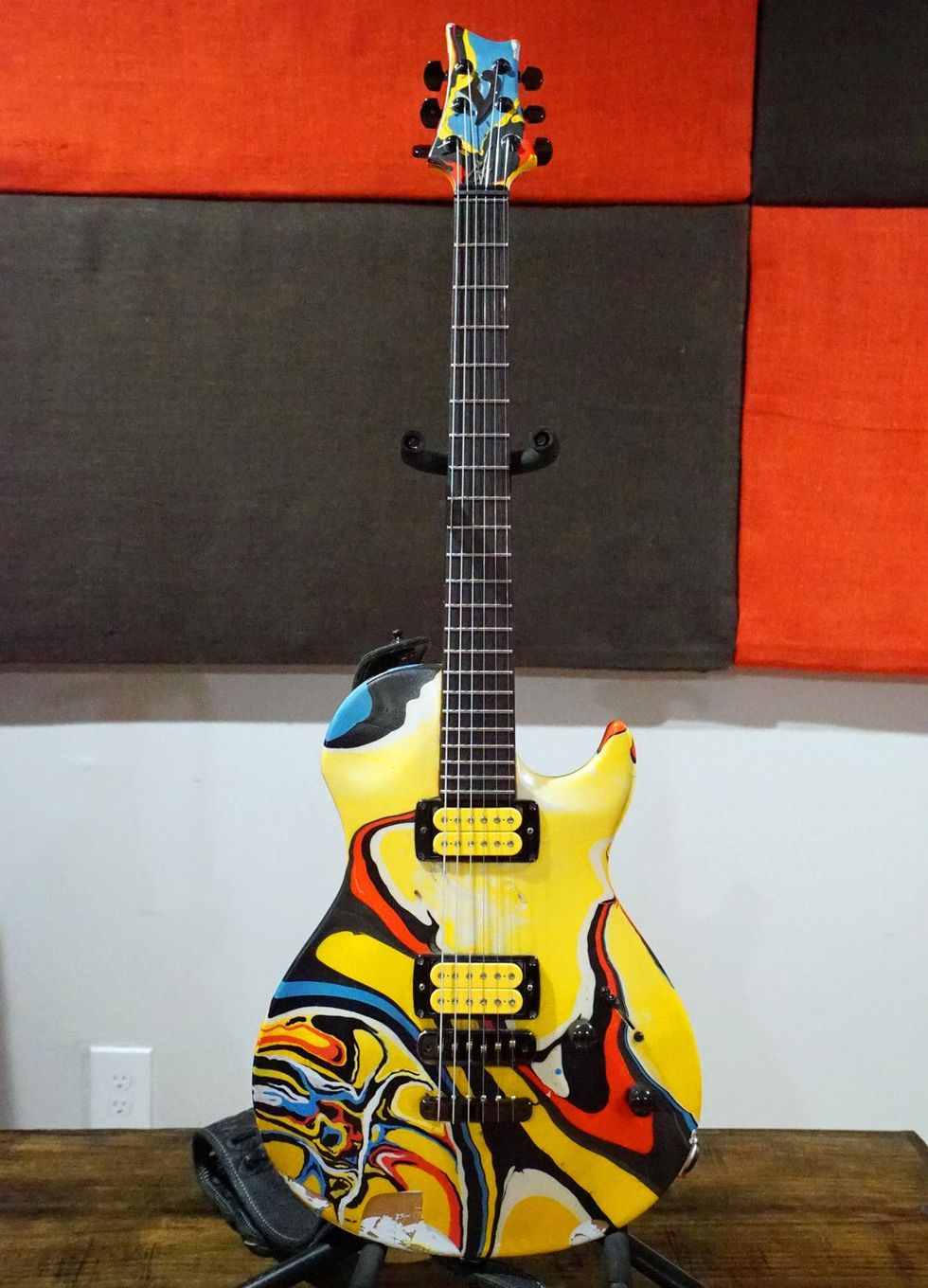
Lee grew up playing Les Pauls and has felt most at home with a two-humbucker setup. A few years ago, he borrowed one of his friend JD Scully's LP-style Vigier G.V. Rock models for nearly two years and couldn't put it down.
"Aside from playing great, it has everything I love about a Les Paul," says Lee. "But the biggest talking point is probably the bolt-on neck that features 90 percent maple and 10 percent carbon fiber that removes the need for a truss rod, and it doesn't move once I get the saddles properly intonated. I've taken it from a trailer in Austin in July to an air-conditioned club and it needs no attention. Same thing with international flights. The Vigier allows me to be pragmatic about touring life but also perform at a high level onstage."
The only change he's made to this G.V. Rock is swapping out the stock Amber humbuckers for DiMarzio Dominions. Lamb of God guitarist Mark Morton and producer Machine (aka Gene Freeman) both suggested he try Morton's signature humbuckers. Lee made the change and hasn't looked back.
Now about the colors. Moon Tooth's first album Chromaparagon featured a vibrant wolf design highlighted in blue, red, black, white, and yellow. To celebrate the release, Vigier worked up a G.V. Rock model with a striking "Chromaswirl" finish that was accomplished with a dip-and-twist technique.
Most of Moon Tooth's material starts tuned down a whole step and for that material Lee employs a custom set of Ernie Ball Slinkys (.011–.014–.020–.032–.044–.056). He wraps the strings around the bridge when putting them on to reduce breaks and so he can bend the note behind the bridge like you'd bend a note on a Tele above the nut.
Other tunings this guitar sees is drop C and open C (C–G–C–E–G–C) that was inspired by the Allman Brothers' "Little Martha" and can be heard on Moon Tooth songs "Igneous" and "Offered Blood."
Vigier G.V. Rock
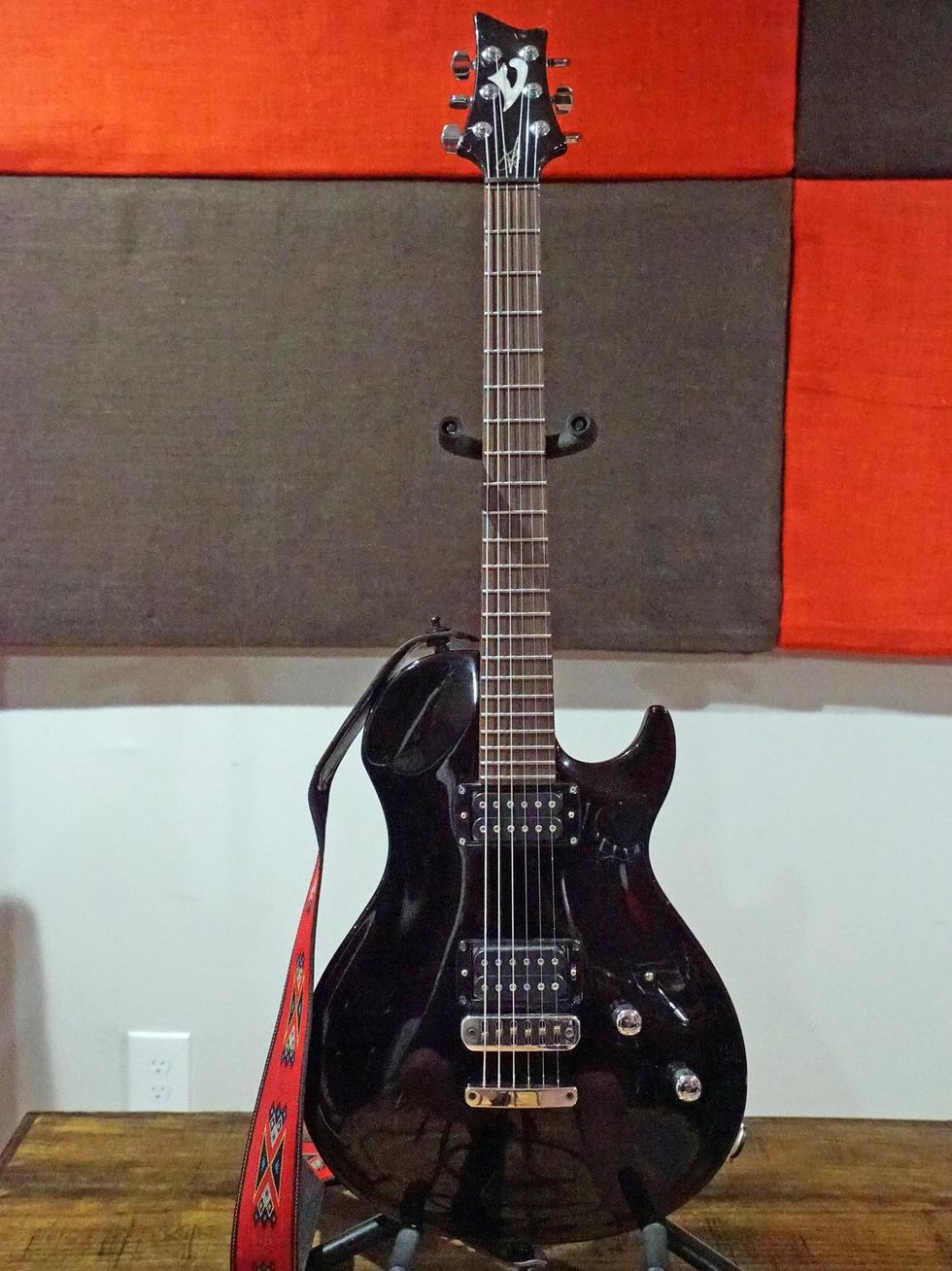
Here is the first Vigier G.V. Rock that Lee's friend DJ Scully loaned to him a few years ago. Clearly, Nick isn't letting it go anytime soon.
It's still stock aside from taking out the stock Amber humbuckers for the Mark Morton signature DiMarzio Dominions.
Vigier Excalibur Ultra Blues
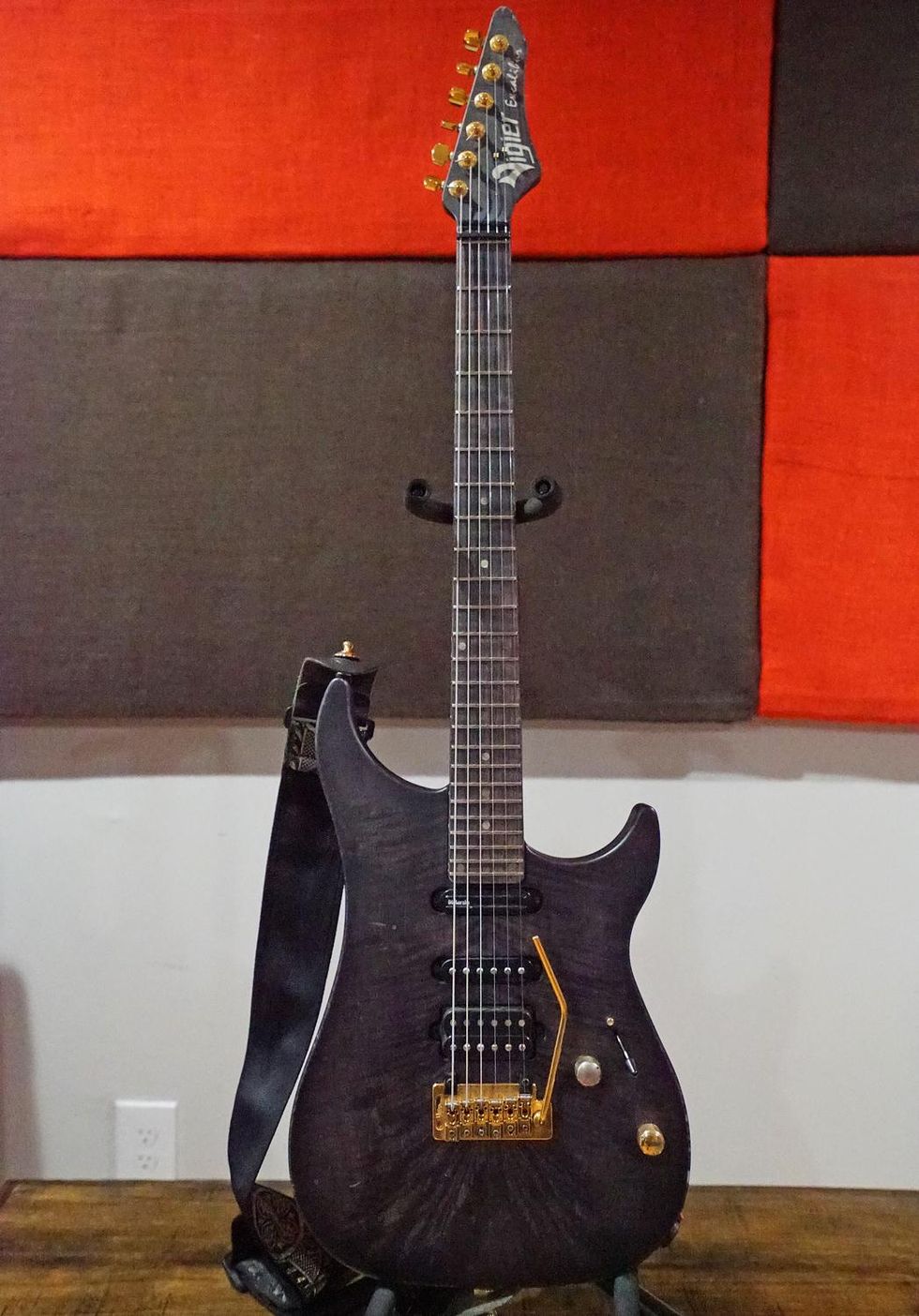
This is Lee's Vigier Excalibur Ultra Blues. It's his newest guitar and first-ever Strat-style instrument he's owned. It's loaded with DiMarzios—Virtual PAF humbucker, Area 58 (middle), and Chopper (neck). This guitar is for the heavier songs in lower tunings like drop A.
1990 Gibson Les Paul Standard
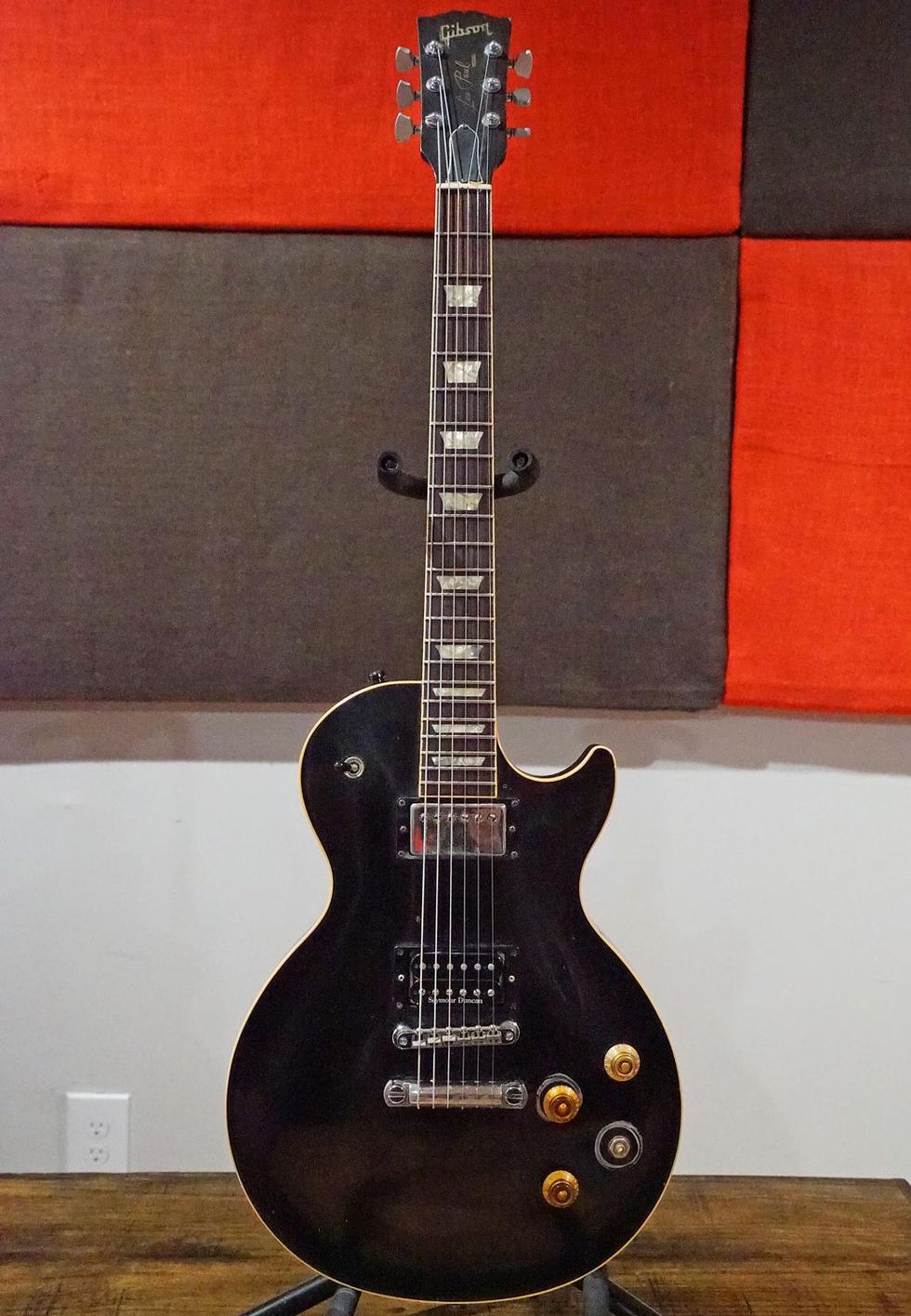
This 1990 Gibson Les Paul Standard is the guitar Lee grew up playing. The neck pickup is still original, but the bridge had some shorting issues, so he put in a Seymour Duncan SH-5 Custom and has been rocking it ever since.
2005 Fender Aerodyne Telecaster
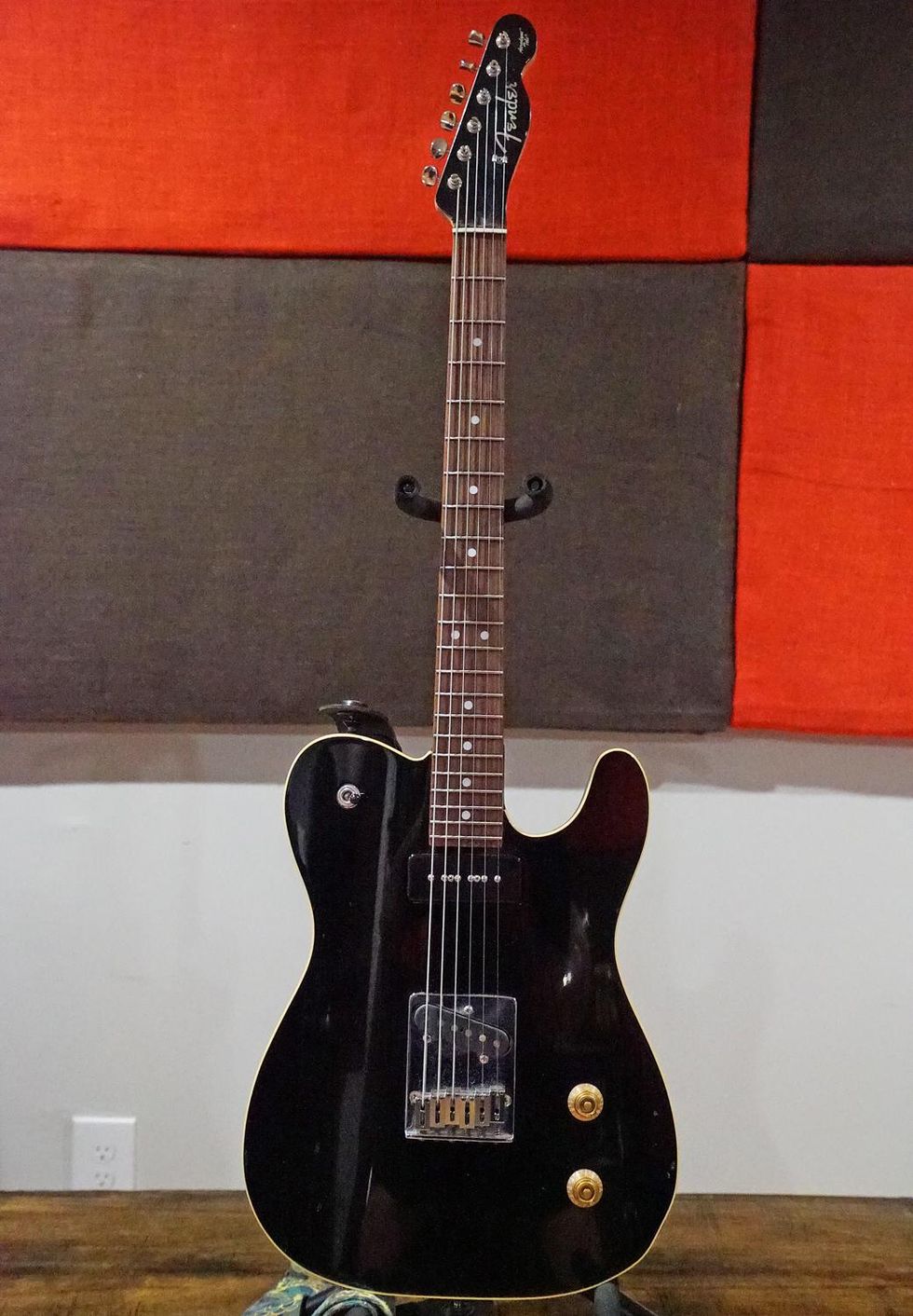
After the aforementioned Les Paul, this 2005 Fender Aerodyne Telecaster is Lee's oldest instrument he currently owns. He doesn't play it live much rather reserving it for teaching students or writing new material.
Nick Lee's Amps
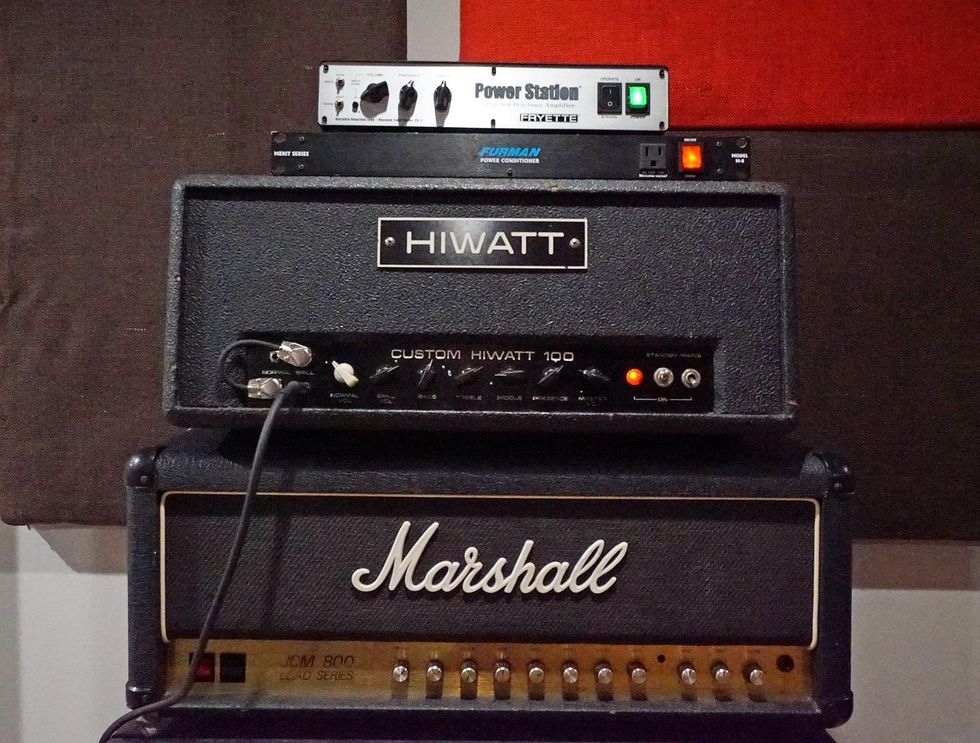
If you've seen Moon Tooth in the flesh, you've seen and felt the 1976 Hiwatt DR103. To accommodate his bandmates and sound techs, Lee took out two tubes and runs the DR103 at 50 watts reducing its volume and headroom (The change also corrected some fuse issues, too). He jumps the channels engaging both inputs creating a fuller, thicker, chunkier sound.
Just before COVID's dark cloud descended, Lee scored the Marshall JCM800 from his Riot bandmate Mike Flyntz. Both heads are featured prominently on the forthcoming Moon Tooth album and for future tours Lee wants to try for a stereo setup using both amps.
"The most important volume knob I've ever bought," jokes Lee when describing the Fryette PS-2 Power Station (top) that allows Lee to push the Hiwatt as hard as he wants without drawing the stink eye from the venue or bandmates.
For the Rundown, Lee ran the Hiwatt through a Krank Revolution 4x12 that has a pair of original speakers and a pair of Eminence Wizards.
Nick Lee's Pedalboard
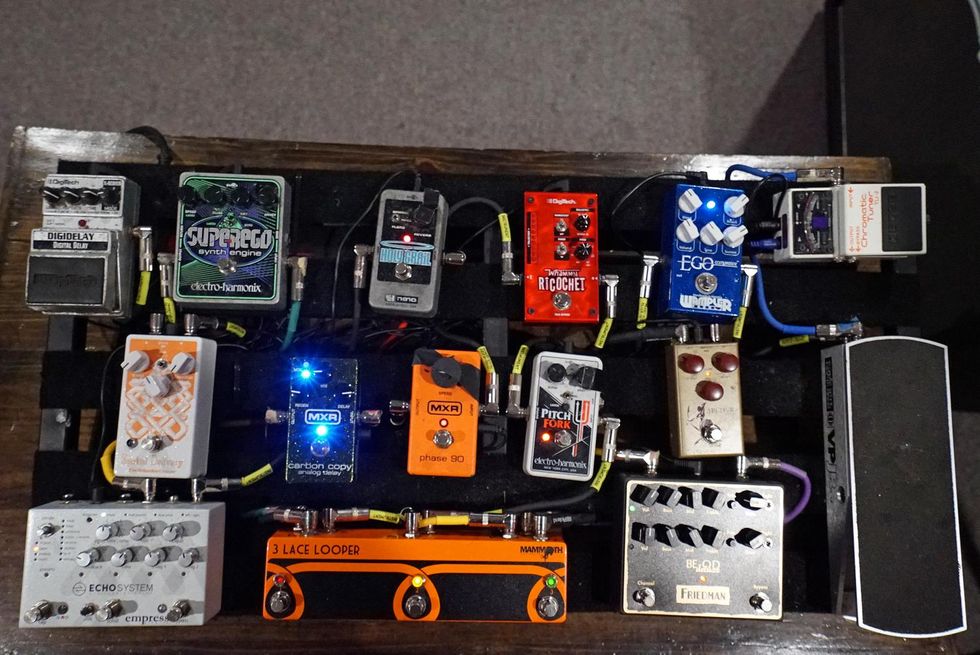
To cover Moon Tooth's maniacal musical moods, Nick Lee enlists a healthy heaping of tone twisters. Time-based stomps include Empress Echosystem, DigiTech DigiDelay, Electro-Harmonix Holy Grail, and MXR Carbon Copy. Modulation and pitch-shifting is handled by the EHX Superego & Pitch Fork, MXR Phase 90, EarthQuaker Devices Spatial Delivery, and a DigiTech Whammy Ricochet. Gain and drive are supplied by the Wampler Ego, J. Rockett Archer, and Friedman BE-OD Deluxe. The utility components of his board include an Ernie Ball VP Jr Volume Pedal, a Boss TU-2 Chromatic Tuner, and a Mammoth Electronics 3 Lace Looper.





![Rig Rundown: AFI [2025]](https://www.premierguitar.com/media-library/youtube.jpg?id=62064741&width=1245&height=700&quality=70&coordinates=0%2C0%2C0%2C0)








 Zach loves his Sovtek Mig 60 head, which he plays through a cab he built himself at a pipe-organ shop in Denver. Every glue joint is lined with thin leather for maximum air tightness, and it’s stocked with Celestion G12M Greenback speakers.
Zach loves his Sovtek Mig 60 head, which he plays through a cab he built himself at a pipe-organ shop in Denver. Every glue joint is lined with thin leather for maximum air tightness, and it’s stocked with Celestion G12M Greenback speakers.









![Devon Eisenbarger [Katy Perry] Rig Rundown](https://www.premierguitar.com/media-library/youtube.jpg?id=61774583&width=1245&height=700&quality=70&coordinates=0%2C0%2C0%2C0)













































